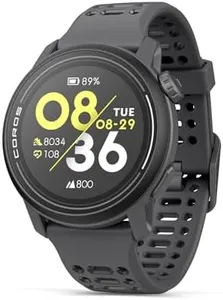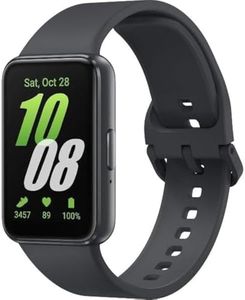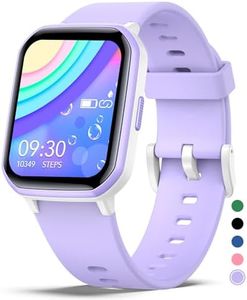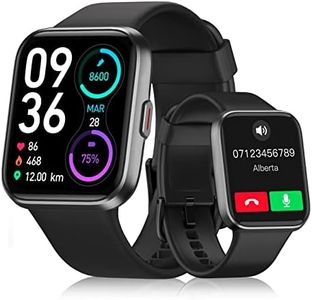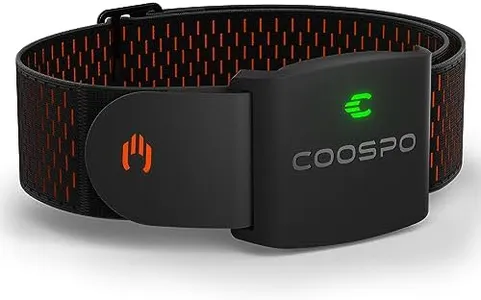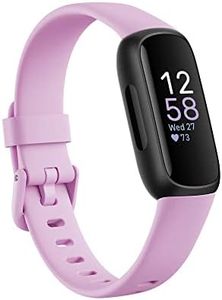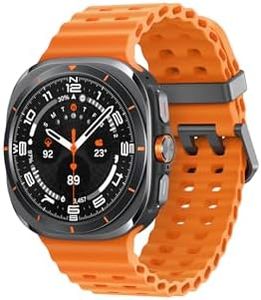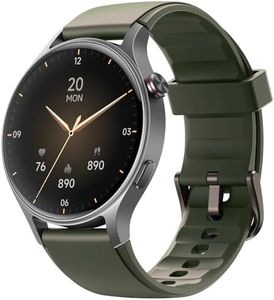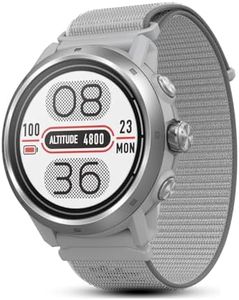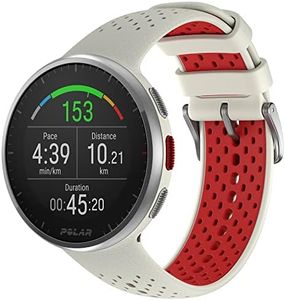We Use CookiesWe use cookies to enhance the security, performance,
functionality and for analytical and promotional activities. By continuing to browse this site you
are agreeing to our privacy policy
10 Best Heart Rate Monitor Watches
From leading brands and best sellers available on the web.Buying Guide for the Best Heart Rate Monitor Watches
Choosing a heart-rate monitor watch can make a big difference in understanding your health, fitness progress, and daily habits. The right watch will give you valuable insights and help you reach your goals, whether you’re a casual walker, dedicated runner, or simply want to keep an eye on your wellness. When selecting a heart-rate monitor watch, focus on features that fit your lifestyle and how you plan to use it. It’s also important to consider how easy it is to use and whether you’re comfortable wearing it all day.Heart Rate Tracking MethodHeart-rate monitor watches typically use either optical sensors (on the wrist) or, less commonly, connect to chest straps. Optical sensors use light to track your pulse and are convenient for daily wear, but may be less precise during intense activity. Chest straps are considered very accurate for workouts, but are less comfortable for all-day use. If you mostly want to track everyday wellness or light exercise, wrist-based sensors are suitable. However, if you need data for high-intensity workouts or specific heart-rate zones, consider a watch that supports pairing with a chest strap.
Continuous vs. On-Demand MonitoringSome watches provide continuous heart-rate monitoring, keeping track of your heart rate all day and night, while others only check when you prompt them. Continuous monitoring gives you a better picture of your resting, active, and sleeping heart rates. On-demand monitoring is simpler but won’t show trends over time. Choose continuous if you are interested in tracking your daily patterns, overall health, or use features like stress tracking; choose on-demand if you prefer simplicity or only want to check during workouts.
Display and Ease of UseDisplay size, clarity, and how you interact with the watch are important factors. A clear, readable screen makes it easy to check your heart rate while moving. Touchscreens are popular and intuitive, but buttons can be easier to use with sweaty hands or gloves. A simple, easy-to-navigate interface is helpful if you are new to tech devices; more complex displays offer more data for experienced users. Consider where and when you will use the watch and pick a style that's comfortable and easy for you.
Battery LifeBattery life determines how often you need to recharge your watch and can range from a single day to several weeks. Watches with bright, always-on screens or continuous monitoring usually need charging more often, while those with simpler displays last longer. If you don’t want to think about charging frequently, look for longer battery life. If you’re okay charging every night to get more advanced features, shorter battery life is less of an issue.
Water ResistanceWater resistance protects your watch from sweat, rain, and swimming. Some watches can handle only light splashes, while others are rated for swimming or even diving. If you plan to wear your watch while swimming or sweating heavily, aim for higher water resistance. If you only need protection from daily life and hand washing, basic resistance is fine.
Fitness and Health Tracking FeaturesMany heart-rate monitor watches offer additional features like step counting, sleep tracking, calorie burn estimation, GPS, or stress monitoring. Decide which added features support your goals. For example, GPS is valuable for runners or cyclists, while sleep tracking is helpful for all-around wellness. If you want an all-in-one tracker, look for a watch with multiple health metrics. If you only care about heart rate, a simpler watch may be better.
Connectivity and App SupportWatches often connect to smartphones and sync data with apps. Good app support lets you see trends, get insights, and sometimes share data with other services. If you like reviewing your stats or want the watch to connect with other health apps, make sure the watch works with your phone and has a well-reviewed app. For basic needs, advanced connectivity isn’t as important.
Comfort and StyleSince you’ll likely wear your heart-rate monitor watch for long periods, comfort is key. Consider the size, weight, band material, and how it fits your wrist. A well-designed, lightweight, and adjustable watch will be more pleasant to wear all day and night. Style may be important if you plan to wear it outside workout sessions. Pick a design you like and can see yourself using daily.

